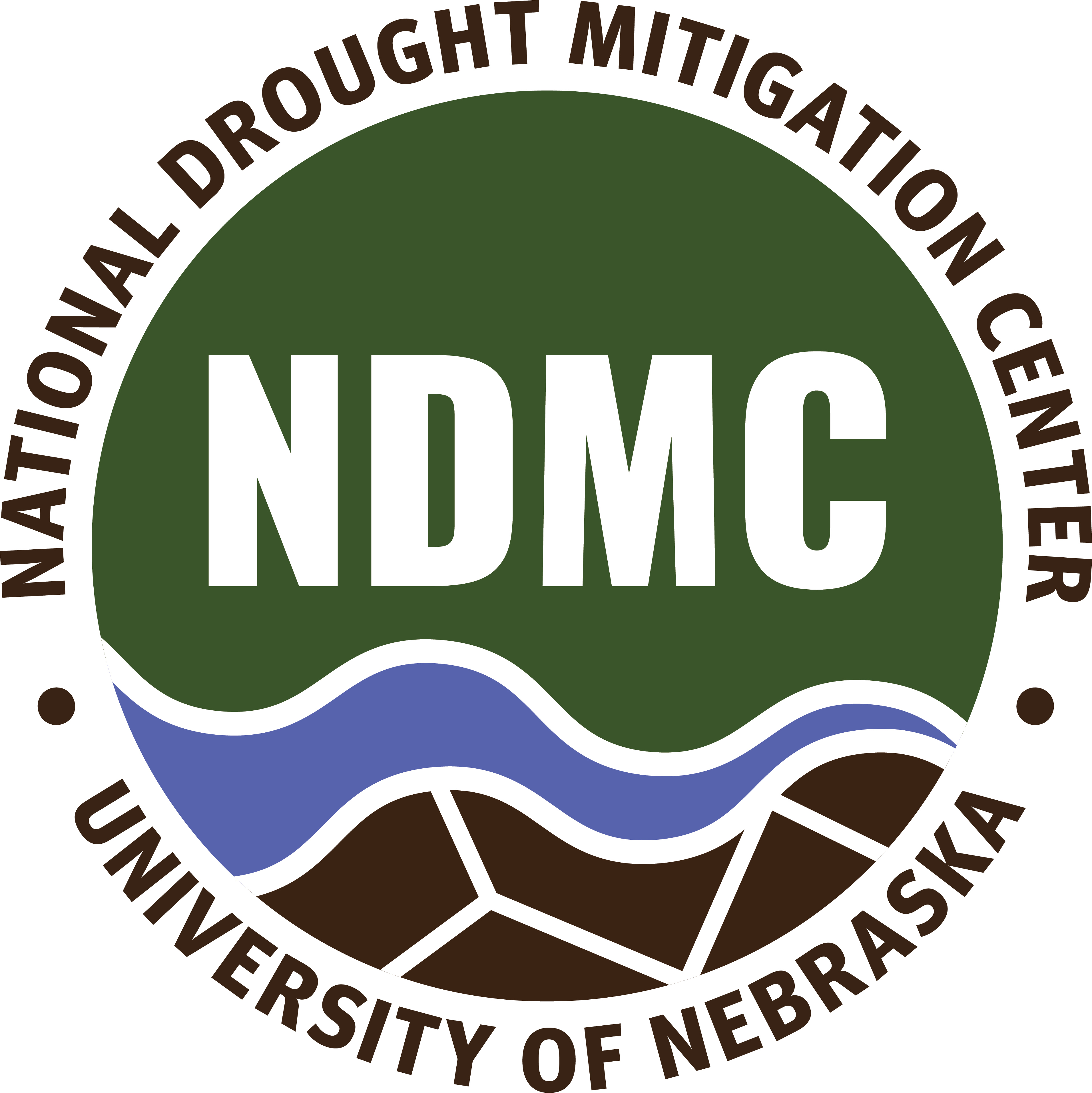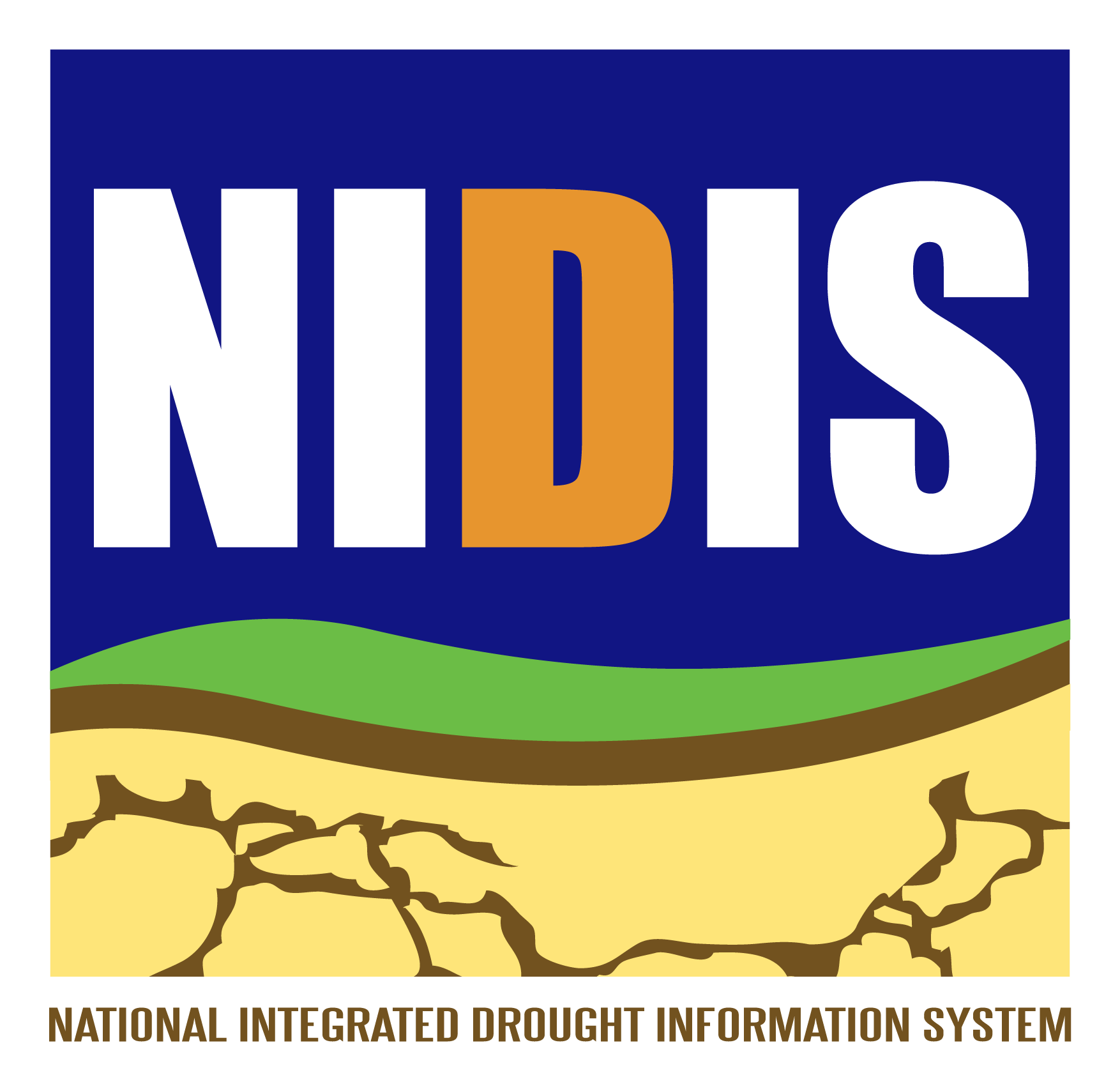About Ohio Drought Monitoring
Objectives
This project evaluated existing drought monitoring tools to identify which were most appropriate for Ohio EMA. Impacts of past drought events in Ohio
were assessed to see how these impacts vary by drought type, drought severity and sector. This project also developed objective,
impacts-based thresholds for triggering drought mitigation and response activities, which will be used to improve the existing
decision-making process that is officially sanctioned by the State of Ohio Emergency Operations Plan, the Drought Incident Annex (DIA).
These tools and impacts will be disseminated through this site.
Products
U.S. Drought Monitor
The U.S. Drought Monitor is a map released every Thursday, showing the parts of the U.S. that are in drought. The map uses five classifications: abnormally dry (D0), showing areas
that may be going into or are coming out of drought, and four levels of drought: moderate (D1), severe (D2), extreme (D3), and exceptional (D4). The Drought Monitor has been a team
effort since its inception in 1999, produced jointly by the National Drought Mitigation Center (NDMC) at the University of Nebraska-Lincoln, the National Oceanic and Atmospheric Administration
(NOAA), and the U.S. Department of Agriculture (USDA). The NDMC hosts the web site of the drought monitor and the associated data, and provides the map and data to NOAA, USDA, and
other agencies. The USDA uses the drought monitor to trigger disaster declarations and eligibility for low-interest loans. The Farm Service Agency uses it to help determine eligibility
for their Livestock Forage Program, and the Internal Revenue Service uses it for tax deferral on forced livestock sales due to drought. State, local, tribal, and basin-level decision
makers use it to trigger drought responses, ideally along with other more local indicators of drought.
It is not a statistical model, although numeric inputs are many: the Palmer
Drought Severity Index, the Standardized Precipitation Index, and other climatological inputs; the Keech-Byram Drought Index for fire, satellite-based assessments of vegetation
health, and various indicators of soil moisture; and hydrologic data, particularly in the West, such as the Surface Water Supply Index and snowpack. The USDM relies on
experts to synthesize the best available data from these and other sources and work with local observers to interpret the information. The USDM also incorporates ground
truthing and information about how drought is affecting people, via a network of more than 450 observers across the country, including state climatologists, National Weather
Service staff, Extension agents, and hydrologists.1
CPC U.S. Monthly and Seasonal Drought Outlooks
The Climate Prediction Center (CPC) releases monthly and seasonal (3-month) drought outlooks where the USDM serves as initial conditions for the CPC's drought outlooks. The Seasonal
Drought Outlook (SDO) is released on the third Thursday of each month and the Monthly Drought Outlook (MDO) is released on the last day of each month. The outlooks depict large-scale
trends based on subjectively derived probabilities guided by short- and long-range statistical and dynamical forecasts. Users are advised to use caution for applications that can be
affected by short lived events. "Ongoing" drought areas are based on the USDM areas (intensities of D1 to D4). NOTE: The tan areas imply at least a 1-category improvement in the
Drought Monitor intensity levels by the end of the period, although drought will remain. The green areas imply drought removal by the end of the period (D0 or more). The SDO and
MDO can be found at https://www.cpc.ncep.noaa.gov/products/Drought/.2
Standardized Precipitation Index
The Standardized Precipitation Index (SPI) is a result of research and work done in 1992 at Colorado State University, United States, by McKee et al. The basis of the index is that
it builds upon the relationships of drought to frequency, duration, and timescales. In 2009, the World Meteorological Organization (WMO) recommended SPI as the main meteorological
drought index that countries should use to monitor and follow drought conditions (Hayes, 2011). SPI uses historical precipitation records for any location to develop a probability
of precipitation that can be computed at any number of timescales up to 48 months or longer. SPI has an intensity scale in which both positive and negative values are
calculated, which correlate directly to wet and dry events. Drought events are indicated when the results of SPI, for whichever timescale is being investigated, become continuously
negative and reach a value of -1. SPI is typically calculated for timescales of up to 24 months, and the flexibility of the index allows for multiple applications addressing events
that affect agriculture, water resources, and other sectors.3
Standardized Precipitation-Evapotranspiration Index
The Standardized Precipitation Evapotranspiration Index (SPEI) was developed by Vicente-Serrano et al. in Spain. As a relatively new drought index, SPEI uses the basis of SPI
but includes a temperature component, allowing the index to account for the effect of temperature on drought development through a basic water balance calculation. SPEI has an
intensity scale in which both positive and negative values are calculated, identifying wet and dry events. It can be calculated for time steps up to 48 months or more. The
inclusion of temperature along with precipitation data allows SPEI to account for the impact of temperature on a drought situation. The output is applicable for all climate regimes,
with the results being comparable because they are standardized. With the use of temperature data, SPEI is an ideal index when looking at the impact of climate change in model
output under various future scenarios.3
Palmer Drought Severity Index
The Palmer Drought Severity Index (PDSI) was developed in the 1960s as one of the first attempts to identify droughts using more than just precipitation data. Palmer was tasked with
developing a method to incorporate temperature and precipitation data with water balance information to identify droughts in crop-producing regions of the United States. For many
years, PDSI was the only operational drought index, and is still very popular around the world. PDSI is calculated using monthly temperature and precipitation data along with information
on the water-holding capacity of soils. It takes into account moisture received (precipitation) as well as moisture stored in the soil, accounting for the potential loss of moisture
due to temperature influences.3
Evaporative Demand Drought Index
The Evaporative Demand Drought Index (EDDI) is a drought index based on the "thirst" of the atmosphere - which leads to the drying of soils and vegetation, and also reflects that drying.
EDDI shows the anomaly in daily evaporative demand aggregated over a specified time window at a given location. EDDI is calculated from observations of the atmosphere near the land surface:
temperature, humidity, wind speed, and solar radiation. It can provide added value to other drought indicators, especially for early warning and flash drought detection. EDDI is calculated over
multiple time windows, similar to SPI and SPEI, to suit different applications. It also uses a classification scheme that is equivalent to the USDM categories, and is not sensitive to
the land-cover type, so it is appropriate for use in all regions.4
7-Day QuickDRI
The Quick Drought Response Index (QuickDRI) is a weekly geospatial model and dataset that is an indicator of short-term dryness across the conterminous United States (CONUS). The
development of the QuickDRI data was a collaborative effort by scientists at the USGS EROS Center, the National Drought Mitigation Center (NDMC) and Center for Advanced Land Management
Information Technologies (CALMIT) at the University of Nebraska-Lincoln, the U.S. Department of Agriculture Agricultural Service, and the NASA Goddard Space Flight Center. The QuickDRI
modeling methodology involves the integration of satellite vegetation, hydrologic, climate, and biophysical data. Weekly varying input data include the Standardized Vegetation Index
(SVI) and the Start of Season Anomaly (SOSA) calculated from the NASA Moderate Resolution Imaging Spectroradiometer (MODIS) sensor on the Aqua platform, the 4-week Evaporative Stress
Index (ESI) Anomaly, the Variable Infiltration Capacity (VIC) 1-month Anomaly (VMA) land surface model, and the 1-month Standardized Precipitation Index (SPI). QuickDRI also ingests
several biophysical variables to assist the model to identify rapidly changing conditions, including a digital elevation model, the MODIS Irrigated Agriculture Dataset, the National
Land Cover Database, and Root-zone Available Water Storage Capacity.5
7-Day VegDRI
The Vegetation Drought Response Index (VegDRI) was developed by a team of scientists from NDMC, the United States Geological Survey's Earth Resources Observation and Science Center,
and the United States Geological Survey Flagstaff Field Center. VegDRI was developed as a drought index that was intended to monitor drought-induced vegetation stress using a
combination of remote sensing, climate-based indicators, and other biophysical information and land-use data. It is used mainly as a short-term indicator of drought for
agricultural applications.3
Vegetation Health Index
The Vegetation Health Index (VHI) was the result of work done by Kogan with NOAA in the United States. VHI is one of the first attempts to monitor and identify drought-related
agricultural impacts using remotely sensed data. AVHRR data in the visible, infrared, and near-infrared channels are all used to identify and classify stress to vegetation due
to drought. VHI is used to identify and monitor droughts affecting agriculture around the world.3
Palmer Z-Index
The Palmer Z-Index responds to short-term conditions better than PDSI and is typically calculated for much shorter timescales, enabling it to identify rapidly developing drought conditions.
As part of the original work done by Palmer in the early 1960s, the Palmer Z-Index is usually calculated on a monthly basis along with PDSI output s the moisture anomaly. The Palmer
Z-Index is sometimes referred to as the 'Moisture Anomaly Index', and the derived values provide a comparable measure of the relative anomalies of a region for both dryness and wetness
when compared to the entire record for that location. It is a derivative of PDSI, and the Z values are part of the PDSI output. It is useful for comparing current periods to other
known drought periods. It can also be used to determine the end of a drought period, when it is used to determine how much moisture is needed to reach the near normal category, as defined
by Palmer.3
Background
Managing climate-related risks to water resources is a grand societal challenge, with uncertain, and potentially severe outcomes. This management can be more effective when
there is a solid foundation of information and tools for identifying threats and evaluating their consequences, as well as potential actions to achieve resilience. The
specific risk management challenge in the Ohio River Basin is planning for and managing hydroclimatic extremes. Drought is the costliest, most wide-spread, and longest
duration of weather-related catastrophes. Drought has regularly caused severe damage and loss of life throughout the Midwest through a myriad of mechanisms including
agricultural loss of crops and livestock, water quantity and quality issues, and impacts on public health. For example, the 2012 drought resulted in >$4B in economic losses,
123 deaths and a 26% decrease in corn yield. Severe droughts also affected the region in 1988, 1991 and 2005.
The Ohio Emergency Management Agency (Ohio EMA) is the agency in the State of Ohio that leads the Drought Assessment Committee (DAC). As outlined in the state drought plan,
Ohio EMA is responsible for collecting and distributing information on observed and expected precipitation, stream flow, reservoirs and ground-water levels, and
reports of dry or impacted wells. Ohio EMA is also responsible for compiling and distributing consolidated situational reports to the Governor and to other identified
agencies and individuals in the state including: Ohio Department of Natural Resources, Ohio Environmental Protection Agency, Division of Drinking and Ground Waters,
Ohio Department of Agriculture, State Fire Marshal, Public Utilities Commission of Ohio and Ohio Department of Health. Therefore, Ohio EMA has a vital role in drought
management and planning.
Methods
Citations
1NDMC at UNL, 2022: What is the USDM? U.S. Drought Monitor. Accessed at: https://droughtmonitor.unl.edu/About/WhatistheUSDM.aspx.
2NOAA/NWS/NCEP/CPC, 2022: Drought Information. CPC. Accessed at: https://www.cpc.ncep.noaa.gov/products/Drought/.
3World Meteorological Organization (WMO) and Global Water Partnership (GWP), 2016: Handbook of Drought Indicators and Indices (M.Svoboda and B.A. Fuchs). Integrated
Drought Management Programme (IDP), Integrated Drought Management Tools and Guidelines Series 2. Geneva. Accessed at: https://www.droughtmanagement.info/literature/GWP_Handbook_of_Drought_Indicators_and_Indices_2016.pdf.
4NOAA PSL, J. Lukas, M. Hobbins, I. Rangwala, and the EDDI team, 2017: The EDDI User Guide. Version 1.0. Accessed at: https://psl.noaa.gov/eddi/pdf/EDDI_UserGuide_v1.0.pdf.
5USGS EROS, 2018: USGS EROS - Archive - Vegetation Monitoring - Quick Drought Response Index (QuickDRI). Accessed at: https://www.usgs.gov/centers/eros/science/usgs-eros-archive-vegetation-monitoring-quick-drought-response-index-quickdri.
Cooperators and Partners
The National Integrated Drought Information System (NIDIS)
Drought Resources Available and Subject Matter Experts
National
Climate Prediction Center (CPC) Drought Information
National Drought Mitigation Center (NDMC)
USDA Weekly Weather Crop Bulletin
U.S. Drought Monitor (USDM)
Regional
Midwest Drought Early Warning System (DEWS)
Midwestern Regional Climate Center
State
NWS Ohio River Forecast Center
Ohio EMA Drought Mitigation and Information
Ohio's Country Journal
 |
 |
 |
 |
 |
 |
 |
Questions and Comments?
quiring.10@osu.edu






